
Pro-Cathedral of the Apostles, CLIFTON
(Roman Catholic)
Bristol
Although the Relief Act of 1790 permitted Roman Catholic worship again in England, it was not until 1829 that people began to build more conspicuous churches. Bishop Baines was appointed Vicar Apostolic of the Western District and planned to build a splendid classical church in Bristol. Land was purchased in Honeypen Hill and work started in 1834. The architect was H.E.Goodridge and he planned a Corinthian Temple, standing on a basement crypt. There was to have been a circular lantern tower over the crossing. work proceded fairly quickly but soon ran into financial and then structural problems.
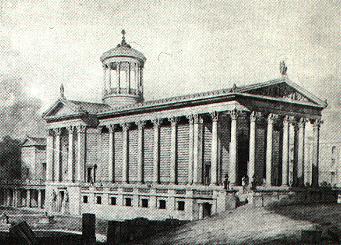
The hillside site had not been wise, yet much of the exterior had been completed: the transept ends and nave walls had their wall piers, although without their decorative capitals. Work was abandoned and mass held in the small chapel of St Augustine built lower down the site. Work resumed in 1846 to a revised plan by Charles Hansom, who infilled the space between the pillars and put in windows (seemingly lacking in the drawing above!) and roofed the entire structure in wood, supported on wooden piers which created a nave and aisles. This was relatively light, compared to the stonework that was planned originally which caused the design to be aborted. The church opened in 1848 and was designated the Pro-Cathedral of the newly formed diocese of Clifton in 1850.
In the 1870s attention was turned to the unfinished west end and portico. Charles Hansom, who lived in Clifton, was still available and drew up plans for the transformation of the exterior into an Italian Romanesque basilica. A school room (later parish hall) was built at the west end with impressive entrance at the NW. The main entrance to the cathedral was a portico on the south side of this new loggia-like building. The west front of the church was also made Romanesque and a tall 200-foot campanile was also planned but never built. The rest of the external walls were left untouched.
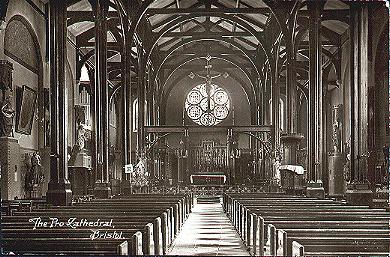
The church was further embellished by furnishings in the ensuing years, the most significant being the superb stained-glass windows by Hardmans of Birmingham inserted in the early C20. The building survived the many World War 2 air-raids on Bristol unscathed. Attention was turned again to the Pro-Cathedral and plans were drawn up to renovate and restore the church, and finally consecrate the building as the cathedral of the diocese. Unfortunately the cost proved prohibitive, as the long-term stability of the roof supports could not be completely assured. In 1965 plans were drawn up for the new Clifton Cathedral, on a new site in Pembroke Road. This opened in 1973, and the old pro-cathedral became a store. The school buildings to the south(ritual north) of the church (which is reverse orientated) and the parish room were taken over in time to serve as the Bristol Waldorf School. They have now signalled their intention to pull out of the buildings.
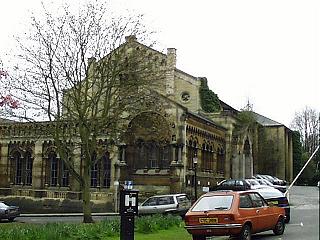
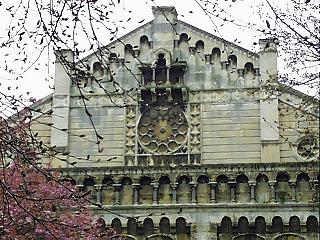
The Pro-cathedral still dominates Park Place, just off Queens Road. It is somewhere I have never needed to go since it closed, and I believed that the buildings were in relatively good order. Alamed by a report in the paper suggesting that all was to be demolished (later retracted) I visited the cathedral on April 14th 2000, in order to photograph some of the details. I was not prepared for the shock I received, and the shame I feel for the current state of what was the principle church of a diocese.
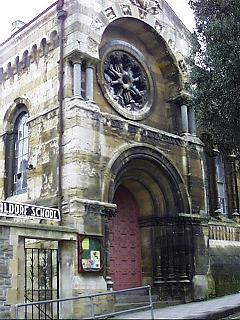
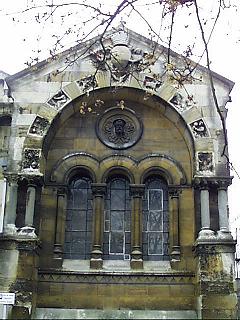
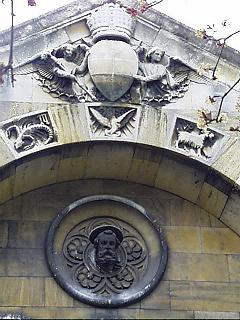
The two opposite ends of the Italianite loggia towards the square still impress, even though their details are becoming weathered. This part of the church is still in use by the school. Some of the detail is outstanding, reflecting the position of the church in the community.
The opposite side of the cathedral to the school is now used as a car park. And here can be seen the sad condition of the building. The first bay is almost smothered by ivy, growing inside and outside of the building. Some windows are boarded up, others have no glass, and others have the Hardman glass (which I thought had been removed) heavily vandalized because the boarding up seems to have been done on the inside!! (Eight of the ProCathedral windows are now at the new St Patrick (RC) Redfield, Bristol, - presumably taken from the boarded up / open windows). the ingenious way that Hansom used the outer piers to support his new roof can also be seen still, the eaves resting directly on them.
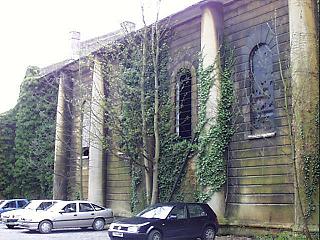
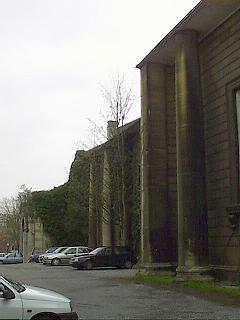
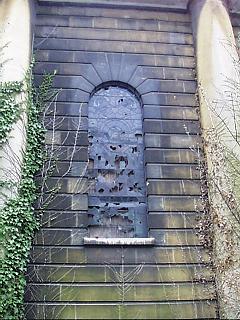
Finally the principle doorway of the church has to be examined.
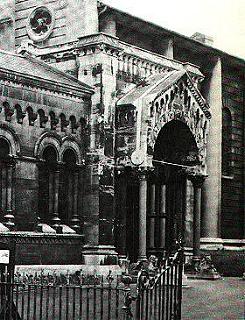
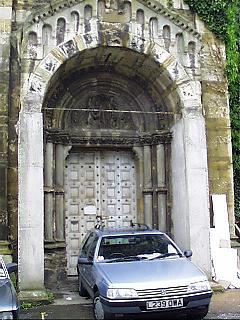
This once noble portico had piers to support the outer arch and gable. These rested on Lions, similar to Venice and Dalmatia. And what is there now? Instead ugly concrete buttresses now hold up the superstructure, and the porch has the final indignity to serve as partial cover for one of the parked cars.
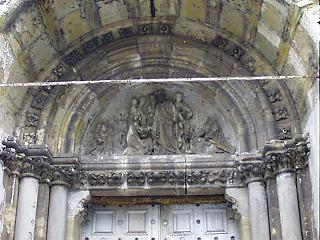
The tympanum and other details are also under threat, seemingly from the droppings of pigeons and other birds, as well as frost and human neglect.
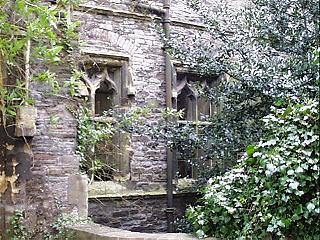
As for the presbytery at the rear, this is now a shell, but I would have thought worthy of preservation and conversion.
So what now the future? On the railings outside are planning applications to turn the school buildings (presumably the loggia) into restaurant and bar. The church is to suffer conversion into flats and the presbytery demolition. English Heritage are involved in the discussions - so there's a relief, I hope. Yet I feel there is many an elderly Catholic who looks the other way at the disgraceful condition of a well-loved and well-used building, one that must have seen as Pro-Cathedral and Parish Church not only Civic Events and Requiem Masses for the good and great of the City and Church, but also the baptisms, first communions , weddings and funerals of the ordinary member of the congregation. This was surely not what was planned back in the early 1970s?
Back to Bristol churches Index